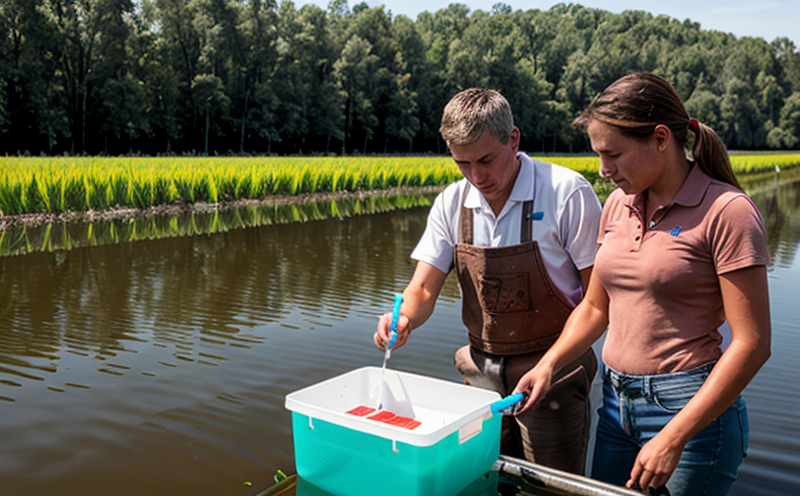Water Salinity Hazard Classification Testing
In agriculture and forestry, water salinity is a critical factor that can significantly impact crop yield, soil health, and overall environmental sustainability. Water salinity hazard classification testing helps identify the level of salt content in irrigation water and assess its potential risks to crops and ecosystems.
The process involves analyzing various parameters such as total dissolved solids (TDS), electrical conductivity (EC), sodium adsorption ratio (SAR), and specific conductance. These parameters provide insights into how salinity levels can affect crop growth, soil structure, and water quality.
For accurate testing, the sample must undergo a series of preparatory steps including filtration to remove particulates, ensuring that only the dissolved salts are analyzed. The test is conducted using advanced instrumentation such as conductivity meters, ion chromatographs, and atomic absorption spectrophotometers.
The results of the analysis are then used to classify the water salinity hazard into different categories based on international standards like ISO 7892-1:2015. This classification helps in determining appropriate mitigation strategies such as irrigation scheduling or selecting salt-tolerant crop varieties.
Understanding and addressing water salinity hazards is crucial for sustainable agricultural practices, especially in regions facing increasing droughts and climate change impacts. By accurately classifying the salinity levels, farmers can make informed decisions to protect their crops and the environment.
| Parameter | Description | Significance |
|---|---|---|
| Total Dissolved Solids (TDS) | Measures all dissolved solids in water, including salts and minerals. | Indicates overall salinity level which can affect crop growth. |
| Electrical Conductivity (EC) | Metric for measuring the ability of water to conduct electricity. | Reflects salt content; high EC indicates higher salinity risk. |
| Sodium Adsorption Ratio (SAR) | A ratio used to predict potential cation exchange capacity in soils. | Helps determine the risk of soil degradation and crop injury. |
| Specific Conductance | Metric for measuring electrical conductivity at 25°C. | Provides a direct measure of salinity levels. |
The testing process is essential for ensuring that water used in agriculture meets the required standards and does not pose risks to crops or the environment. By using this service, stakeholders can make informed decisions about irrigation practices and protect their investments in agricultural resources.
Industry Applications
- Irrigation Management: Helps farmers optimize irrigation schedules to minimize water use and reduce salt accumulation in soil.
- Crop Protection: Identifies high-risk areas where crops might be damaged by excessive salinity, allowing for preventive measures.
- Sustainable Agriculture: Supports the development of sustainable farming practices that are resilient to environmental changes.
- Environmental Monitoring: Assists in monitoring and managing water quality in agricultural landscapes.
The application of salinity hazard classification testing extends beyond agriculture, influencing broader sectors such as forestry, where it helps protect native ecosystems from invasive species and climate change impacts. By integrating this service into their operations, stakeholders can enhance the resilience and productivity of their agricultural systems.
Why Choose This Test
The water salinity hazard classification test is essential for ensuring the health and sustainability of crops and ecosystems. By accurately identifying and managing salinity levels, this service helps prevent crop damage, soil degradation, and environmental harm.
Choosing this test ensures that agricultural practices are in compliance with international standards such as ISO 7892-1:2015. This standard provides a robust framework for assessing water quality parameters, ensuring that the testing process is reliable and consistent.
The use of advanced instrumentation guarantees precise results, which are critical for making informed decisions about irrigation practices. By providing accurate data on salinity levels, this service enables stakeholders to implement targeted interventions to mitigate risks associated with high salt content in water.
Furthermore, the classification test supports sustainable agricultural practices by promoting the use of water-efficient technologies and selecting appropriate crop varieties that are tolerant to varying levels of salinity. This not only enhances productivity but also contributes to long-term environmental sustainability.
Use Cases and Application Examples
Irrigation Systems: Testing is conducted on irrigation water from different sources such as rivers, lakes, and wells to ensure that the salinity levels are within acceptable limits for various crops.





